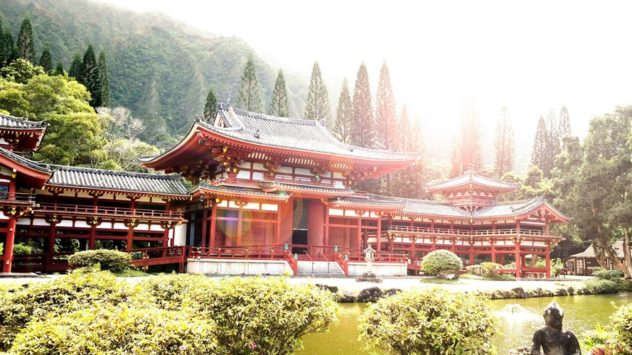Vocabulary:
- primeval /prahy-MEE-vuhl/
- legacy /LEG-uh-see/
- archaeological /ahr-kee-uh-LOJ-i-kuh l/
- calligraphy /kuh-LIG-ruh-fee/
- intangible /in-TAN-juh-buhl/
- heritage /HER-i-tij/
[noun] – features belonging to the culture of a particular society, such as traditions, languages, or buildings, that were created in the past and still have historical importance
Fort Santiago is part of the cultural heritage of Manila, Philippines. - banquet /BANG-kwit/
[adjective] – ancient; existing at or from a very early time
The St. Ludwig Church was established in the primeval period.
[noun] – something that is a part of your history or that remains from an earlier time
Exchanging products is the greatest legacy in market history.
[adjective] – the study of ancient cultures through examination of their buildings, tools, and other objects
We travel to desserts to make archaeological digs to find dinosaur skeletons.
[noun] – the art of producing beautiful writing, often created with a special pen or brush
Ancient calligraphy was only written on stones.
[adjective] – impossible to touch, to describe exactly, or to give an exact value
Having empathy is an intangible characteristic of a leader.
[noun] – a large formal meal for many people, often followed by speeches in honor of someone
The castle prepared five different banquets of food for all the visitors.
The restoration of historical artworks is one of the legacies of Japan to the next generation. The skills and traditional techniques through the production of the artifacts are proof that Japan’s rich nature contributes to artistry in their history. In addition, Kyocera Museum of Arts in Kyoto City exhibits national treasures such as archaeological artifacts, calligraphy, crafts, paintings, sculptures and other Kyoto’s treasures.
Ancient natives in Japan exhibit different interesting architectural forms from farmhouses to imperial palaces. Constructions were made of natural timberwood material as it is a good stronghold for earthquakes. In the Jomon period, houses were built straight down to the earth floor and used wood for foundations. The prehistoric architectural styles of Japan have adapted to modern times, specifically western architecture.
The prosperous performing arts in Japan history scopes from theatrical play to traditional music and dance performances. One of the classical theaters in Japan is called ‘kabuki’. Kabuki is a drama theater with dynamic styles of acting. UNESCO proclaimed the Kabuki theater as an Intangible Cultural Heritage of Humanity in 2005. On the other hand, a traditional puppet theater in Japan emerged in the 17th century called ‘bunraku’. Bunraku originated in Osaka and has depicted adaptation of stories like classic and tragic love, legends, tales and heroic event stories. Puppeteers operate the half life-sized Bunraku puppets instead of using strings to produce realistic facial expressions and actions.
Kimono marked the substantial fashion of Japan all throughout the years. It is also a practical garment for all occasions as it flaunts different patterns and colors that signify Japan culture and artistry. Kimono became a known garment from the 18th century worn by both men and women. It is typically made of silk, wool or synthetic fabric. During summer and or after bathing at hot springs, Japanese usually wear ‘yukata’, a light-cotton kimono, and a wooden footwear called ‘geta’.
Every country has its own special foods they can be proud of around the world. Lots of restaurants cater to varieties of foods, and Japanese cuisine is one of the major banquets to attract customers. In fact, Japanese cuisine was declared as an Intangible Cultural Heritage of Humanity by UNESCO. Traditional Japanese cuisine is called ‘washoku’, written in kanji – ‘wa’ means Japan and harmony, while ‘shoku’ means food and to eat that simply means all ingredients are harmoniously blended and artistically presented. It also implies fantastic cooking techniques and natural ingredients over the whole Japan islands. Tracing 10,000 years back in the long history of Japan, popular and great deal Japanese courses are comparatively new across the globe.
Japan’s culture is set amid the magnificent nature and artistic hands that made it known in the world. Understanding and appreciating the cultural origin of Japanese heritage imparts the depth of history to the modern era. By rediscovering one’s culture means having the pride to share the opportunity to experience Japan’s culture in another nation.
Comprehension Questions:
- What are the natural treasures Kyocera Museum of Arts in Kyoto City exhibits?
- How did the Japanese construct houses during the Jomon Period?
- What title award was proclaimed to Kabuki by UNESCO?
- What materials are kimono typically made of?
- What does washoku mean?
Discussion Questions:
- From the article, what natural treasure interests you the most? Please explain why.
- Which house do you want to build, traditional architecture of Japan or modern house structure? Please discuss.
- Have you watched kabuki or bunraku? If yes, please tell more about it. If not, which one do you want to watch or to try? Please explain.
- If you will make your own banquet, what Japanese cuisine will you present? Please discuss.
- How would you share the opportunity to experience Japan’s culture to others? Please elaborate.
